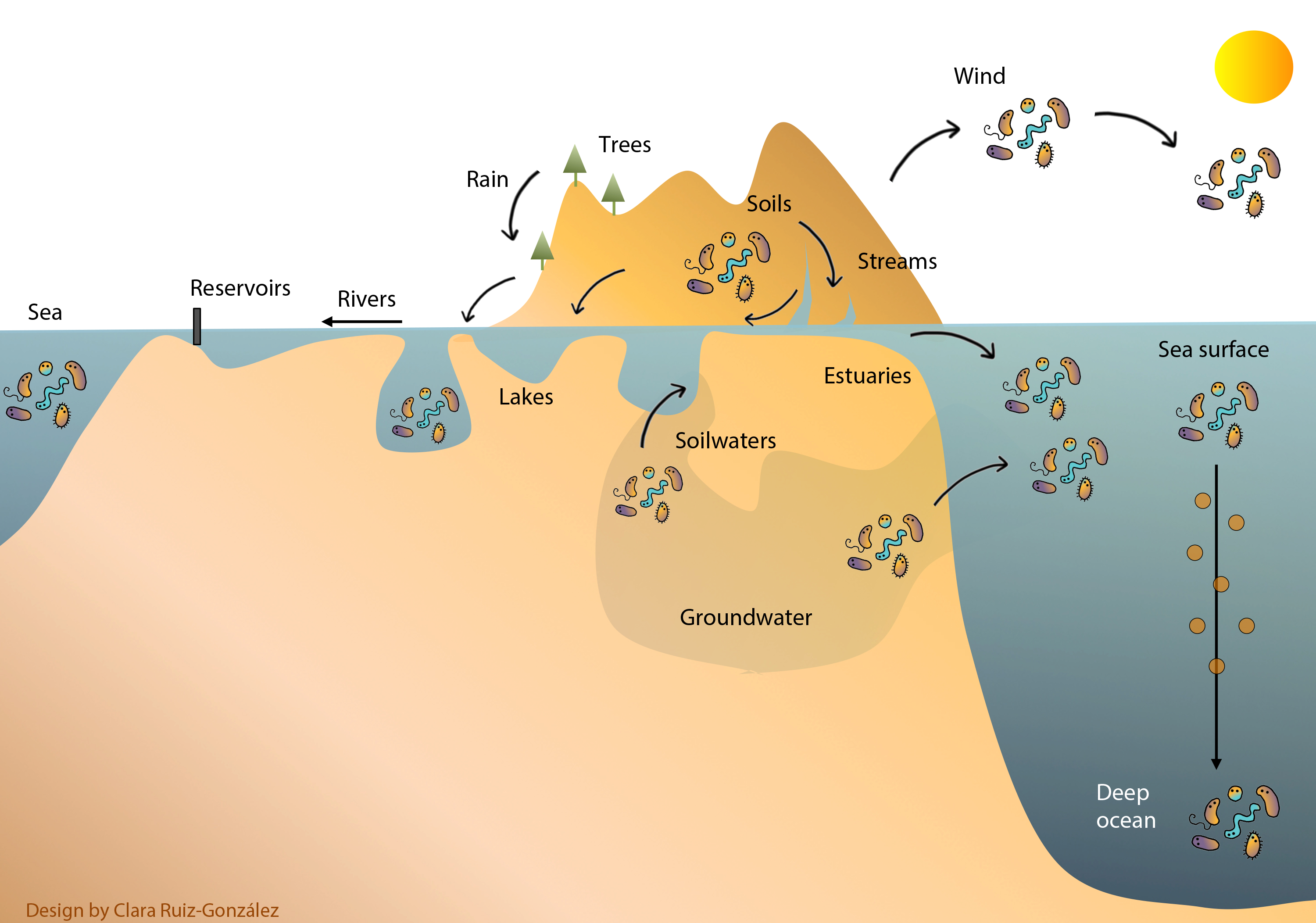- Language: English
- Did you miss the talk? Watch it in this video: Conecta-CSIC
Summary
Microorganisms are key players in terrestrial and aquatic ecosystems, controlling all major biogeochemical fluxes of elements. Although the study of microbial ecology goes back several decades, our ability to understand or predict microbial responses to environmental changes remains limited. One of the reasons may be that microbial communities contain species that are not adapted to the local environment and do not contribute to community functioning, given that microorganisms can be dispersed long distances and can persist inactive out of their suitable habitats for long times. The advent of sequencing technologies, which enabled an improved access to the microbial diversity and expanded the scale of studies, uncovered that microbes often make part of larger metacommunities in which local assemblages are linked by the dispersal of species. However, disciplines such as microbial limnology and oceanography (the study of freshwater and marine microorganisms, respectively) often operate in isolation, providing a fragmented view of a naturally connected microbial world. In this talk I will summarize what we have learnt regarding the role of microbial dispersal and connectivity on the structuring and functioning of aquatic microbial communities, with particular emphasis on bacterioplankton assemblages. These investigations have highlighted that terrestrial, freshwater and marine microbiomes are intimately linked by the transport of taxa through flowing water, the air, or other processes such as marine particle sinking, and hence that understanding the drivers and ecological consequences of microbial ecology and biogeography requires going beyond ecosystem boundaries. Sharing knowledge and expertise between traditionally independent disciplines will be essential for advancing towards a more holistic view of microbial ecology that considers species linkages between different ecosystems.
Brief biography
I did my PhD at the Institut de Ciències del Mar (ICM-CSIC) in Barcelona (2006-2011), during which I studied how sunlight influences the activity of different marine bacterioplankton and phytoplankton groups through experimentation and the use of techniques that allow visualizing and quantifying the incorporation of organic compounds by individual cells. During my postdoctoral stage, I moved the focus of my research to the study of freshwater bacterial communities through the use of high throughput DNA sequencing technologies: First, at the University of Girona (Spain, 2011-2012), I investigated the effects of damming on riverine bacterial communities, and then at the Université du Québec à Montréal (Canada, 2013-2015), I explored the large-scale biogeography of terrestrial and aquatic bacterial communities and their connectivity across the landscape. Since 2015 I am back at ICM-CSIC in Barcelona, where I have initiated a research line on submarine groundwater discharge to the Mediterranean and its effects on coastal microbial communities. In addition, I also study how microbial dispersal shapes the large-scale biogeography of marine bacteria in the global ocean, as well as the ecology and diversity of the ultramicrobacteria, tiny bacteria that might play important roles in ecosystems or when dispersed between different habitats. Overall, my scientific experience has consolidated between research fields that not always communicate, such as limnology, oceanography and theoretical ecology. This trajectory has provided me with an unusual balance between these disciplines that I try to maintain in my research.
